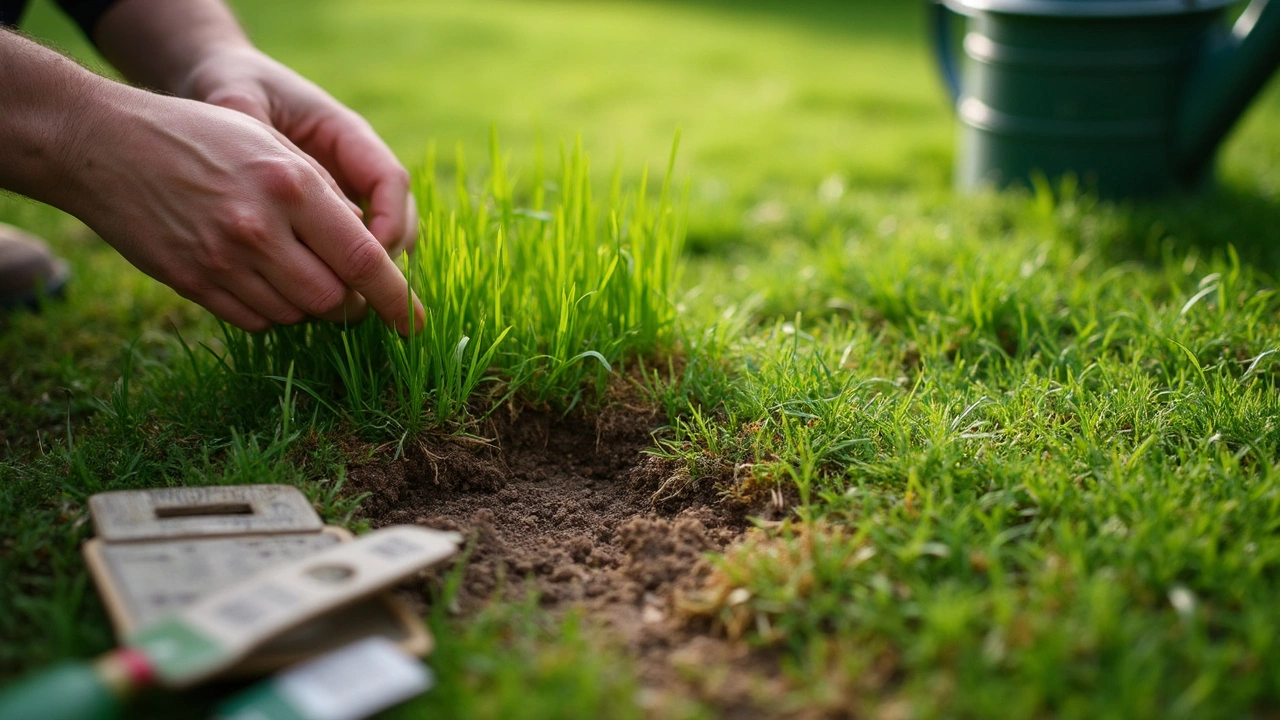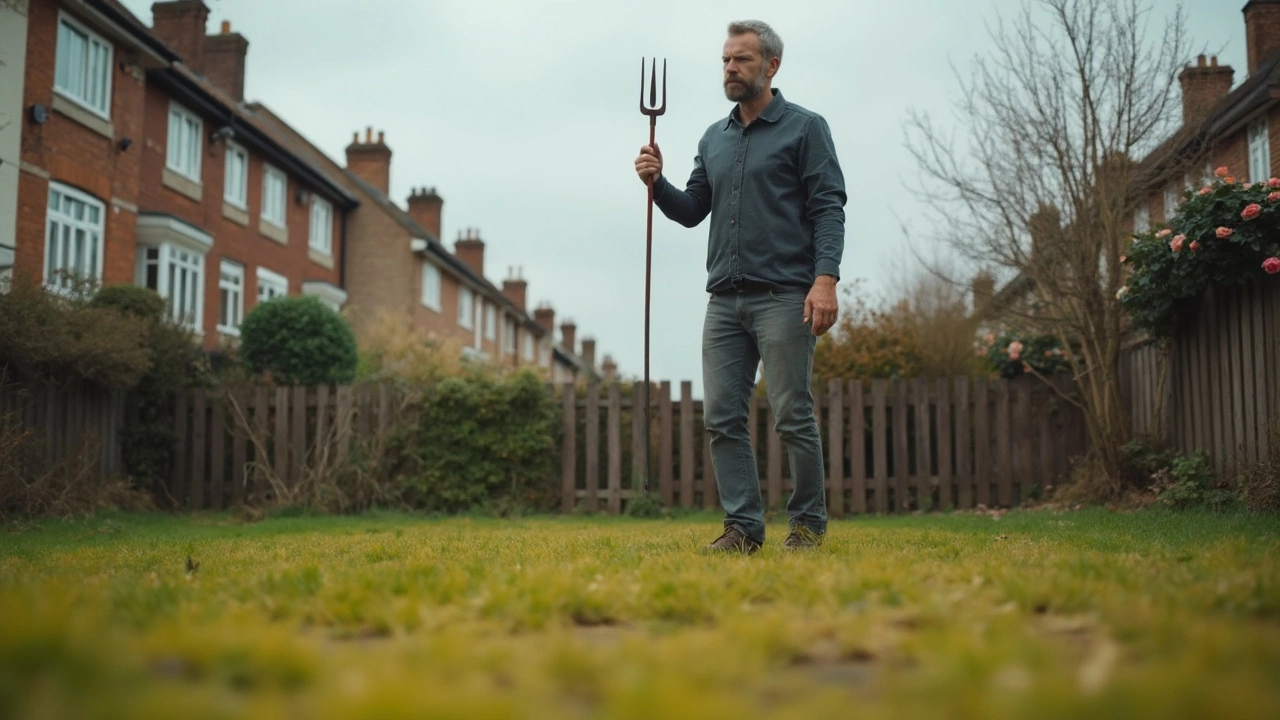Ever step outside and wonder, “What the heck happened to my yard?” You’re not alone—yards don’t just go bad for no reason. It usually comes down to one or two slip-ups that cause the grass to look sad, patchy, or weirdly colored.
First off, don’t blame yourself. Lawns can be picky, and the real problems are sometimes hidden. Maybe it’s yellow spots that weren’t there last month, or sections that died out even though you swear you watered. Sometimes it’s weeds marching in like they own the place, or bugs munching away where you can’t see. Most of this stuff starts small and only gets worse if you ignore it.
The good news is, there’s almost always a fix. You just need to know what to look for—and what actually makes lawns bounce back fast. Stick around and you’ll get some hard-earned tips that have saved a bunch of sad-looking lawns, even if you’re starting with,”It looks hopeless, man.”
- Yellow Spots, Brown Patches, and Bare Dirt—What Went Wrong?
- Watering and Mowing: Easy Mistakes That Wreck Lawns
- Weeds, Pests, and Hidden Enemies Lurking Around
- Quick Wins: Real Fixes to Revive Your Grass
Yellow Spots, Brown Patches, and Bare Dirt—What Went Wrong?
When your yard is covered with yellow splotches, dry-looking patches, and random dirt holes, your grass is basically waving a red flag. These problems aren’t just ugly—they’re your lawn’s way of saying something’s seriously off. Let’s break down what’s actually behind each of these messes.
Lawn care basics can get skipped by accident. Sometimes it’s lawn diseases, sometimes it’s the dog doing his thing in the same spot every day, and other times it’s just a case of the wrong grass for your area. Heat, drought, and even cheap fertilizers can mess things up fast.
Here are the usual suspects:
- Pet Urine: It’s loaded with nitrogen. That burns grass and leaves neon yellow patches with oddly dark edges.
- Fungal Diseases: Brown patch, dollar spot, and red thread love warm, humid conditions. They kill off patches of grass and sometimes even spread overnight.
- Grubs or Lawn Pests: These guys eat grass roots. Large bare patches? That’s a classic grub signature. Check for spongy ground—if you roll up the turf like a rug, it’s definitely grubs.
- Incorrect Watering: Overwatered lawns develop shallow roots and can grow fungus. Underwatered lawns dry out, thinning and dying in parts.
- Compacted Soil: If your soil’s hard as a rock, grass roots just can’t spread out. Water runs off, and seeds never get a chance.
To get a clearer idea of what could be ailing your yard, check out these red flags matched to what they mean:
| Problem Area | Most Likely Cause | Quick Check |
|---|---|---|
| Yellow Rings | Pet urine or fertilizer burn | Check for pets, recent feeding |
| Round Brown Patches | Fungal disease | Humidity, excess thatch, overnight moisture |
| Thin Bare Dirt Spots | Grubs, poor soil, heavy foot traffic | Dig for bugs, test soil hardness |
| Grass Pulls Up Easily | Grub damage | Try rolling up a section by hand |
| Random Spots Turning Gray | Lack of water or shade stress | Check irrigation, look for shade obstacles |
Don’t forget, every yard’s got its own quirks. A patchy lawn is rarely just one thing, so it pays to walk your turf, scratch the soil, and look at the pattern of damage. Nine times out of ten, fixing the obvious (watering, soil, or pet habits) makes a massive difference. In the next section, I’ll talk about the everyday mistakes that make these problems way worse—and how to avoid them.
Watering and Mowing: Easy Mistakes That Wreck Lawns
If your grass looks dull or full of bald spots, there’s a good chance something’s off with the way you’re watering or mowing. These two things seem simple, but getting them wrong can stress out your lawn fast.
Let’s start with watering. Most folks either soak their yard every day or forget about it until the soil cracks. Here’s the deal: grass likes about 1 inch of water per week (from rain or your hose), best delivered all at once. Slow, deep watering encourages roots to grow deeper, making your lawn tougher against heat and drought. Sprinkling a little every day? That only makes roots weak and grass thirsty.
| How Often | How Much | Best Time |
|---|---|---|
| 1-2 times per week | 1 inch per week | Early morning (5–9 a.m.) |
Watering at night might sound smart, but it just invites disease. Early morning is key—grass dries quickly in the sun, so fungus and bugs get less of a chance to move in.
Now, let’s talk mowing. Most people cut grass too short because it “looks neat.” This is probably the #1 killer of a decent lawn care routine. Cutting below 2.5–3 inches weakens the grass, lets the soil bake, and gives weeds an easy shot at taking over. Keeping grass a bit taller shades roots, holds in moisture, and chokes out invaders. Plus, never mow with dull blades—those just rip grass up instead of giving a clean cut.
- Stick to the “one-third” rule: Never cut off more than 1/3 of the grass height in a single go.
- Change up your mowing pattern each time so ruts don’t form.
- Leave clippings on the lawn if possible—they break down fast and return nutrients to the soil.
If you nail your watering and mowing, you’re setting up your yard for way less stress, greener color, and a lot fewer weeds. Most of the time, fixing these two basics is a game changer.

Weeds, Pests, and Hidden Enemies Lurking Around
So you’re looking out the window and seeing more dandelions than grass? You’ve probably got a weed issue, and it can spiral fast. Weeds like crabgrass, clover, dandelion, and nutsedge are total freeloaders—pushing out real grass and hogging all the water and food. When you let weeds stay, they steal what your lawn needs to get healthy again.
Another big reason for a rough-looking yard: bugs you barely notice at first. Ask anyone who’s fought grubs—those fat white larvae that eat grass roots and leave brown, spongy patches. Or chinch bugs and armyworms, which feed on grass blades and can wipe out a whole section if you don’t act quick. If you spot birds digging or find unexpected bare spots, it’s time to check for pests.
Mold and fungi also sneak in when conditions are soggy or humid. Ever see gray, powdery patches or circular spots with dead grass? That could be lawn diseases like dollar spot, brown patch, or snow mold. Leaving grass too long and letting moisture sit invite these problems fast.
Here’s how you can fight back:
- Lawn care basics: Mow regularly—don’t let grass get too long, since tall grass helps weeds hide and go to seed.
- Pull weeds early, before they spread. Spot-treat with weed killer or vinegar spray for small outbreaks. For lots of weeds, consider products known as pre-emergents in early spring—they stop weeds before they grow.
- If you suspect grubs, peel back a section of turf. If you find more than five grubs per square foot, a grub killer is necessary.
- Fungal outbreaks? Water in the early morning and avoid soaking your yard at night. Remove dead clippings and don’t over-fertilize—extra nitrogen can help fungi spread.
Most of these problems start small. Watch for early signs so you can jump on them before there’s real damage. Trust me, dealing with pests or weeds right away is a lot easier (and cheaper) than trying to fix a yard that’s gone totally south.
Quick Wins: Real Fixes to Revive Your Grass
Ready to stop staring at those ugly patches and start fixing things? Turns out, most lawn problems come down to a few simple mistakes—and that means you can get results fast with some targeted moves. Forget complicated routines. Here’s what works if you want to see green ASAP.
- Grass health kicks up fast when you actually feed the lawn. Seriously, grab a bag of balanced fertilizer (look for one with a 3-1-2 or 4-1-2 ratio of nitrogen, phosphorus, and potassium). Spread it evenly—don’t just dump and hope. Lawns need good nutrition as much as people do.
- If your grass looks thirsty, don’t just sprinkle it for five minutes. Lawns need about 1 inch of water a week—deeper, less frequent watering is better because it gets the roots growing down. Try putting out tuna cans when you water. When they fill up to an inch, you’re done.
- Patchy spots? Get a bag of grass seed that matches your current type. Rake up the dead stuff, toss down some seed, and lightly cover with soil. Water gently every day until you see sprouts. Cheap trick but it works fast.
- Weeds everywhere? Don’t pull them one by one unless you love pain. Use a selective weed killer safe for your grass type. Do the whole yard—most weeds are sneaky and keep coming back if you don’t.
- Raise your mower blade. Scalp the grass and you’ll get bare patches. Shoot for about 3 inches in most cases, unless you’re caring for Bermuda or another short-turf type.
Here’s a quick look at the “fastest fixes” versus how fast you might see improvement:
| Fix | Impact on Lawn | How Soon You'll See Changes |
|---|---|---|
| Apply balanced fertilizer | Greener, fuller grass | 7-14 days |
| Deep watering (1 inch/week) | Less stress, new growth | 1-2 weeks |
| Reseed bare spots | Patches fill in | 10-21 days for sprouts |
| Apply weed control | Fewer weeds, less competition for grass | 7-14 days |
| Raise mower blade | Taller, healthier lawn | A few mowings |
One last tip: if nothing works, check your soil pH. Lawns hate acidic or super-alkaline soil. You can get a test kit at any home store and add lime or sulfur if the pH is off. Tough lawns almost always start with the right soil underneath.
